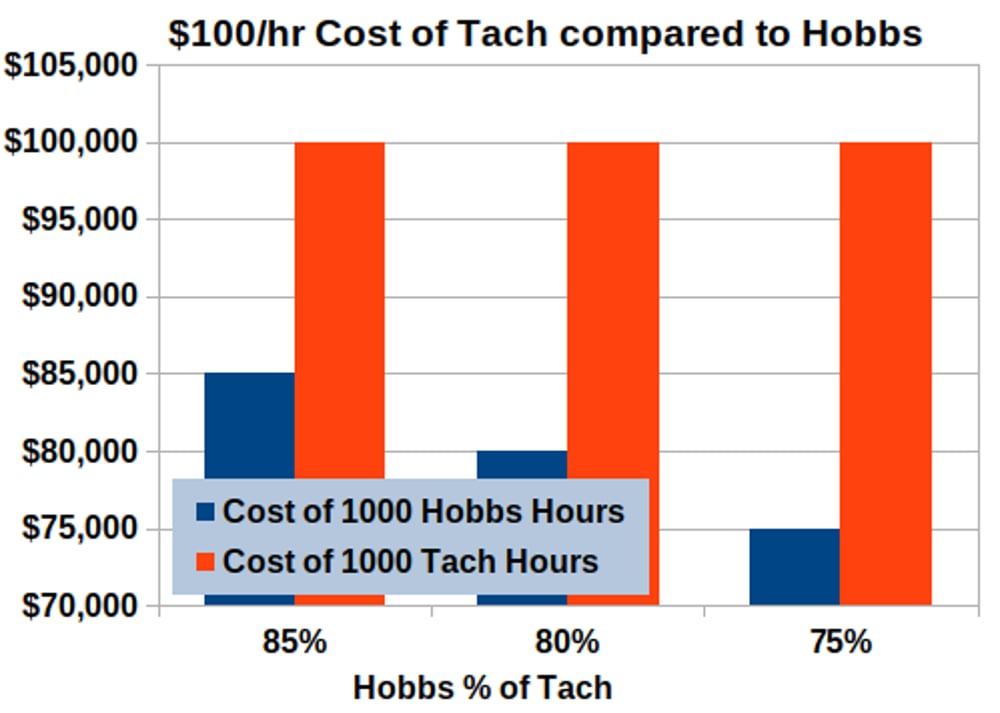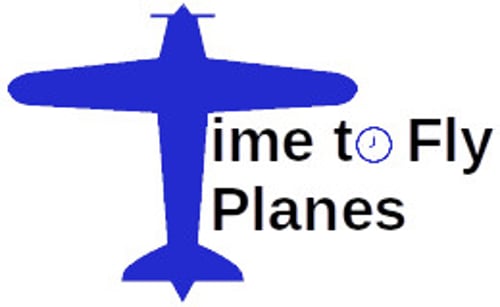Hobbs Versus Tach – A fight of the century?©
Gary Palmer Oct 24 2021
That title sounds like the billing for a prize fight or something. It could be seen as a fight between the cost paid and hours logged for each flight. The bottom line is that paying for tachometer (tach) hours and logging Hobbs hours is in the best interest of the pilot! The difference, can typically be from 15 to over 25 percent! Hobbs effectively measures the clock hours the engine is operating while tach hours are time the engine is operating at more than a minimum speed, and thus tach hours are less than and not consistent with Hobbs clock hours.

Let’s explore the differences and application of each which may clarify a misunderstanding or raise awareness of something which is not always explained.
Have you noticed that tach time is always lower than Hobbs time? Ever wonder why what it means to you, the pilot? It actually makes a big difference so it should be understood; especially since the Hobbs time can range anywhere from 15 to 35 plus percent more than tach time. Let’s look at how both times are used, but start with an FAA fact.
FAR 61.1(b) “Aeronautical experience means pilot time obtained in an aircraft, flight simulator, or flight training device for meeting the appropriate training and flight time requirements for an airman certificate, rating, flight review, or recency of flight experience requirements of this part.“
Note there is no distinction regarding how to determine that flight time. In fact if you ask the FAA they will not give a definitive answer, you just need an accurate accounting. It could be a stopwatch timing engine start to shutdown, or timing liftoff to touchdown; either is acceptable. Additional FAR references to “flight time”, “training time” and “pilot time” again have no mention of how time is determined.
FAR Part 61.1 states: “Training time means training received— (i) In flight from an authorized instructor;“
FAR 61.159 and 61.160 defines “pilot time” for logging purposes, but do not distinguish between Hobbs or Tach as the basis of that time logged, in fact there is no prescription for measuring “time”.
We are left with options for logging hours but what about other timers which might be required in an aircraft? For GA single engine aircraft there is no FAA mandate for an hourly timer. Airplanes with engines have a tachometer requirement and the engine manufacturer wants to track engine operation hours for maintenance and liability purposes. While there is not an FAA required timer, there is a manufacturer installed (not sure if the manufacturer requires it) “timer” for engine hours, these are the tach hours. Hours on the tach define intervals for things like oil changes, inspections, maintenance and overhauls. It’s important to understand the tach hours meter is not always on, while on the ground at minimum idle or even sometimes in the traffic pattern the tach meter may slow or stop, there is no requirement for a tach hour to match a clock hour. You can prove that on your next flight! You want to pay by tach time!
Since the tach can actually stop while the engine is idling there was a need to have a more accurate accounting of hours which the aircraft is in use. That fits perfectly for how rental fleets should track and charge. You pay for the time you use the aircraft, not just when the engine RPM is high enough to spin the tach. Since the Hobbs accounts for the aircraft in use time, it makes a perfect match for determining training, piloting or aeronautical experience duration. This means Hobbs hours are always more than tach hours and at best cost the same. You want to log Hobbs time!
You should have a grasp of the difference between determining the time you pay for and the time you log. Unfortunately, this is not a negotiation when you rent, you pay for the time as defined in the rental agreement; Hobbs. Where there may be a more cost effective option is in ownership, partnership, and clubs. Now that you are better informed hopefully you find a way to save money while you maximize the time you log.
To apply a real example to these statements consider a Cessna 172 used for many local training type flight with the occasional long distance. The long distance would be multiple days with 3-6 hours per day. From May 2013 to Oct 2017 the total time on the HOBBS was 685.5, the total tach was 531.6. That shows the tach to be about 77.5 percent of the Hobbs time. Again similar circumstances (after a replacement and re-calibration on the tachometer) the times from Oct 2017 to Nov 2021 the total Hobbs time was again 770.9 and the Tach time was 573.7 to again produce a 74.4 percent different. That means $100 dollars paid for Hobbs hours would equate to paying only $74 (or $77) for tach hours. A significant savings!
FAA References:
FAA Letter discussing Hobbs versus Tach for maintenance time: <https://www.faa.gov/about/office_org/headquarters_offices/agc/practice_areas/regulations/interpretations/Data/interps/2016/Grannis_2016_Legal_Interpretation.pdf>
FAR 61.1 Aeronautical experience and training/pilot time: <https://www.ecfr.gov/cgi-bin/text-idx?SID=2111d7a4776b4525968b92316d462dff&mc=true&node=se14.2.61_11&rgn=div8>
FAR part 43.11 (a)(2) Inspection records; total time in service: <https://www.ecfr.gov/cgi-bin/text-idx?SID=84434dbc9cf20e9ccccc63dbbba1fbc1&mc=true&node=pt14.1.43&rgn=div5#se14.1.43_111>
FAR 91K section 6-989 (B) Define “Total Time in Service”: <https://drs.faa.gov/browse/excelExternalWindow/DRSDOCID105052291020230616023551.0001>
FAR 1.1 Define “Flight Time”: <https://www.ecfr.gov/current/title-14/chapter-I/subchapter-A/part-1/section-1.1>
FAR 61.1159 Define “Pilot Time”: <https://www.ecfr.gov/cgi-bin/retrieveECFR?gp=&SID=84434dbc9cf20e9ccccc63dbbba1fbc1&mc=true&n=sp14.2.61.g&r=SUBPART&ty=HTML#se14.2.61_1159>
Additional reference on same topic: <https://doublemaviation.com/hobbs-time-vs-tach-time/>
